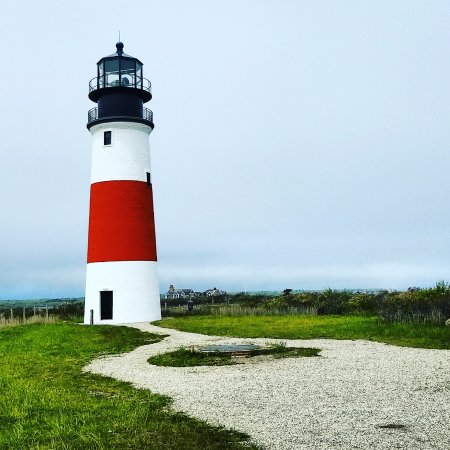With climate change as a constant impending threat, historic sites must consider their future sustainability with regards to the environment. Sea levels are rising, and many historic sites are located close to harbors and ports, which used to be the economic centers of many towns. However, this puts them in the prime position to be damaged by the environment. While the historic house field is very aware of this problem, it is something that requires continuous attention.Personally, this issue has been on my mind because I am interning at the Nantucket Historical Association this summer, and this problem is something that the entire island will face in the next several hundred years. However, some historic sites have come up with creative solutions to combat the sea level rise, as well as other natural issues.

- The Sankaty lighthouse on Nantucket was moved inland in 2007 because of eroding shorelines and a terrible storm. Mounted on rails, the entire lighthouse was pushed farther inland in one piece to preserve it for longer. While this solution saves the lighthouse for now, it is not a permanent solution to the problem, and it will probably need to be moved again in the future.
- Farnsworth House in Plano, Illinois experiences flooding that has damaged many different parts of the property, including textiles and flooring. The National Trust owns the house, and they are very open on their website about the different methods that they considered when trying to redirect the flood water. In conjunction with Robert Silman Associates, they explored five different options before finally choosing a system that will raise the house up temporarily when the area floods, and then the house can be returned to its original state afterwards. This option preserves both the architect’s vision and the physical house.
- Many houses in Newport, RI are experiencing the same issues of coastline erosion, including the Christopher Townsend House that the Newport Restoration Foundation (NRF) owns. A recent New York Times article highlighted some possible ways to adapt historic houses for the future. The Townsend House currently employs a method of “dry-proofing,” which involves sandbags to block flooding from the house as well as a pump to keep water from standing in the basement. Some other suggestions for the house include replumbing houses so the water diverts underneath the house and is drained elsewhere, a cistern under the house to collect the water, or a way of floating the house using guide posts.
We may not be able to change what has already happened to our planet, but we can at least be as prepared as possible to try to adapt with these environmental hazards, as well as advocate for conservation and environmentally sustainable practices. Many historic sites are organizing conferences and trying to set an example of innovative planning while also maintaining the integrity of their sites.
Leave a Reply